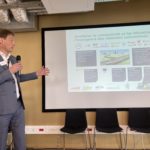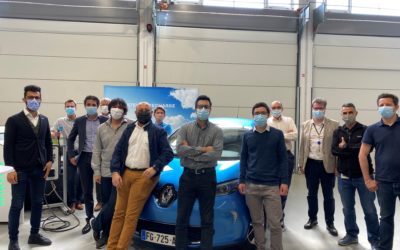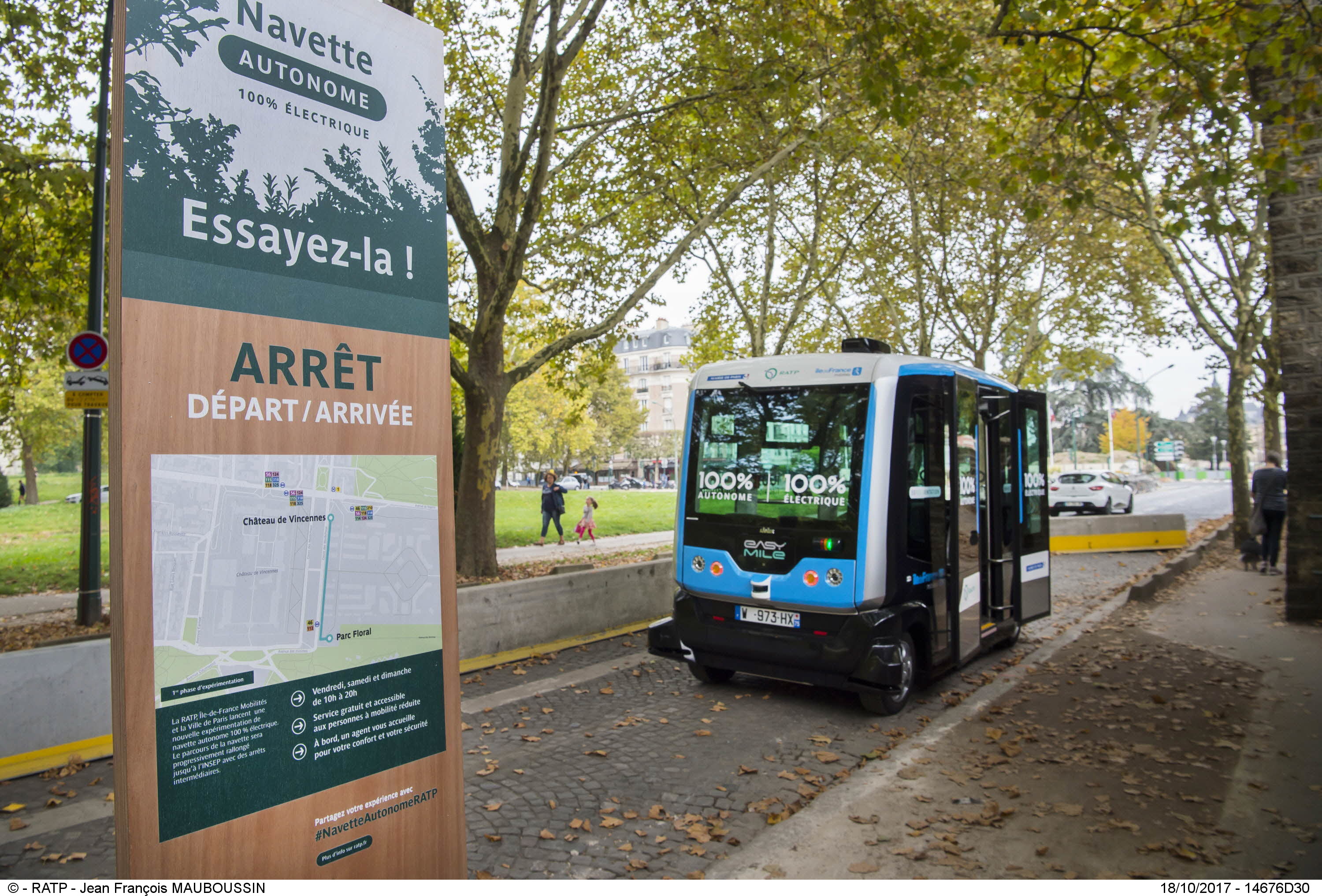5G for connected and automated cooperative mobility: towards greater safety and efficiency 21 April 2022, 9 AM - 6 PM Organisation : VEDECOM, Catapult, AKKA Technologies and VALEO Location: VEDECOM headquarters at mobiLab and Satory tracks, Versailles. 23 bis allée...
5G benefits for automated vehicles: first lessons learned by 5G-MOBIX French trial site
The 5G-MOBIX project aims to evaluate the contribution of 5G on connectivity for Connected and Automated Mobility (CAM) services and functionalities, under cross-border conditions. The 5G-MOBIX test sites include two cross-border corridors (Greece-Turkey and Spain-Portugal) and six local test sites in France, Germany, the Netherlands, Finland, China and South Korea. The local sites provide additional and complementary contributions to the cross-border trials
A safe and efficient driving at highway entry for automated vehicles
5G-MOBIX French Trial Site has four members, VEDECOM (leader), Catapult, Akka, and Valeo, and is located in the Paris region. The French Trial Site (FR TS) has been testing a so-called “Infrastructure-Assisted Advanced Driving” CAM use-case, in which the 5G MEC infrastructure guides automated connected vehicle for safe and efficient driving at a highway entry.
A level 4 car with a 5G onboard unit
Several cross-border issues have been tackled by the FR TS with the solutions of multi-PLMN connectivity, predictive quality of service (QoS), Wave connectivity, and satellite-fallback. 5G NSA networks provided by three French telecom operators, Orange, Bouygues and TDF, have been used to test the target use case and the considered solutions.
During the period of the project, the FR TS has deployed two MEC that were installed with a number of software modules, particularly V2X-application server, data fusion, risk assessment, QoS prediction, KPI manager. Six 5G onboard units (OBUs) designed by VEDECOM and VALEO have been integrated in the two level 4 automated vehicle and the two connected vehicles.
Test and trialling in both private and open road, including a cross border corridor
Test and trialling activities of the FR TS started in late 2021 in order to execute a huge number of use-case-specific and agnostic tests cases in closed test tracks and open road. Furthermore, the FR TS made two contributions to the ES-PT cross border corridor:
- test and benchmarking of multi-PLMN connectivity
- contribution to the ES-PT variant of advanced driving use case. The tests at the ES-PT have been conducted in March 2022.
Results and public demonstration on April 21, 2022
The obtained results of the test-cases finalised in France and at the ES-PT CBC show the benefits of 5G for the target CAM use-case especially the great advantages of multi-PLMN connectivity.
benefits of 5G for the target CAM use-case especially the great advantages of multi-PLMN connectivity.
On the 21st of the April, the FR TS has organized its public demonstration event with public authorities, industries, SMEs, and academia. The event consisted of a workshop session, demonstrations, and an unprecedented round-table discussion.
Full review of the day with presentations and replays below:
5G-MOBIX project presentation
General introduction
By Eric Lebeau, CEO of VEDECOM.
Introduction to the European 5G-MOBIX project and the activities of the French site
- Introduction to the 5G-MOBIX project and the activities of the French site, by Oyunchimeg Shagdar, R&D team leader at VEDECOM (French version)
- 5G-MOBIX project results, by Oyunchimeg Shagdar, R&D team leader at VEDECOM (French version)
- 5G MOBIX French site: tests and trials by Camille Plestan, European projects officer at VEDECOM (French version)
Other European and French projects focusing on 5G and automated vehicles
Presentations of other 5G projects in which VEDECOM is involved:
- 5G Med project, by Kévin Nguyen, Innovation project manager at VALEO (French version)
- 5G Meta platform, by Benoît Baurens, Head of Innovation at AKKA Technologies (French version)
- 5G Open-road experiment in the Paris-Saclay science and technology cluster, by Laurent Février, R&D Project Director at VEDECOM (French version)
Track Demonstrations
- Infrastructure assisted automated lane change at highway entry (demonstration with an L4 automated vehicule prototype)
- Maintaining continuity of service when a vehicle switches from one network to another
- Dynamic quality control of 5G communications
Round table “Vision of 5G and CCAM by the market players”.
An unique round-table discussion with all the players in the value chain: vehicle manufacturers, telecommunication and road infrastructure operators, public transport players.
Moderated by Tony Jaux, President of VEDECOM, VP Innovation at Stellantis and Director of the connectivity program at the French Automobile Platform.
Round-table replay
Around the table:

- Anh Tuc Nguyen, 5G networks and uses Project Manager, French Ministry of Economy, Finances and Recovery
- Emmanuel Micol, Chief Marketing Officer B2B, BOUYGUES
- Ndoffène Diouf, Innovation Officer, TDF
- Guillaume Grollaux, VP Roads and Connected Vehicles division, LACROIX CITY
- Saleh Bensator, Head of connected systems for autonomous mobility, STELLANTIS
- Isabelle Paulin-Jardel, Head of autonomous car partnership, RENAULT
- Thomas de Vial, Segment Chief Engineer, CONTINENTAL
- Sophie de Lambert, Head of Research and Innovation of the Driving Assistant Research entity, VALEO
- Jean-Laurent Franchineau, VP Zero Emissions Strategy, TRANSDEV










